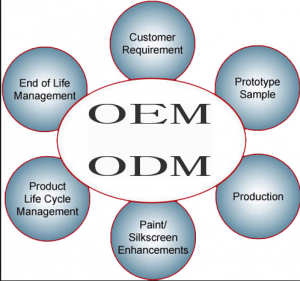When it comes to manufacturing, there are two terms that often confuse people – OEM and ODM. Whether you are a buyer or a business owner, understanding the difference between these two concepts is crucial to make an informed decision. In this article, we will explore what OEM and ODM stand for and discuss which option is more suitable for buyers.
OEM, short for Original Equipment Manufacturer, is a production model where a company designs and manufactures products that are marketed and sold under another company’s brand name. In simpler terms, an OEM company focuses on the manufacturing process and produces products based on the specifications provided by the buyer or brand owner. The buyer, in this case, usually has limited control over the design and production process, as the OEM company has expertise in manufacturing the product.
On the other hand, ODM stands for Original Design Manufacturer. With this approach, the manufacturer designs and develops products based on their own expertise and market research. ODM companies have the capability to create products with unique designs, functionalities, and features, which can be further customized or branded by a buyer. Instead of providing specifications, the buyer can simply provide their requirements or ideas, and the ODM company will take care of the rest, from development to manufacturing.
Both OEM and ODM have their own advantages and disadvantages depending on the buyer’s needs and requirements. OEM is often preferred by buyers who have a well-defined product design and require reliable and standardized manufacturing processes. The buyer can focus on marketing and promoting their brand while leaving the manufacturing responsibilities to the OEM company. This model also allows buyers to leverage the OEM’s expertise in manufacturing and lower production costs due to economies of scale.

On the other hand, ODM is a suitable option for buyers who are looking for innovative and unique products. ODM companies have an experienced design and development team that can create products from scratch or make modifications to existing designs. This flexibility allows buyers to have products that stand out in the market, offering a competitive edge. ODM also provides faster time-to-market as the development and production processes are handled by the manufacturer themselves, reducing coordination efforts between different parties.
However, choosing between OEM and ODM is not always straightforward as the decision depends on various factors. Buyers should consider the nature of their business, their budget, product requirements, and the level of control they want over the manufacturing process. For example, if a buyer has a unique concept and wants to maintain complete control over the product’s design and development, ODM might not be the right choice.
In conclusion, both OEM and ODM models serve distinct purposes and cater to different buyer requirements. OEM is suitable for buyers who have a predefined product design and want reliable manufacturing, while ODM is more suitable for buyers looking for innovative and custom solutions. Ultimately, it is crucial for buyers to thoroughly evaluate their needs and objectives to make an informed decision that aligns with their business strategies.
Post time: Oct-19-2023
